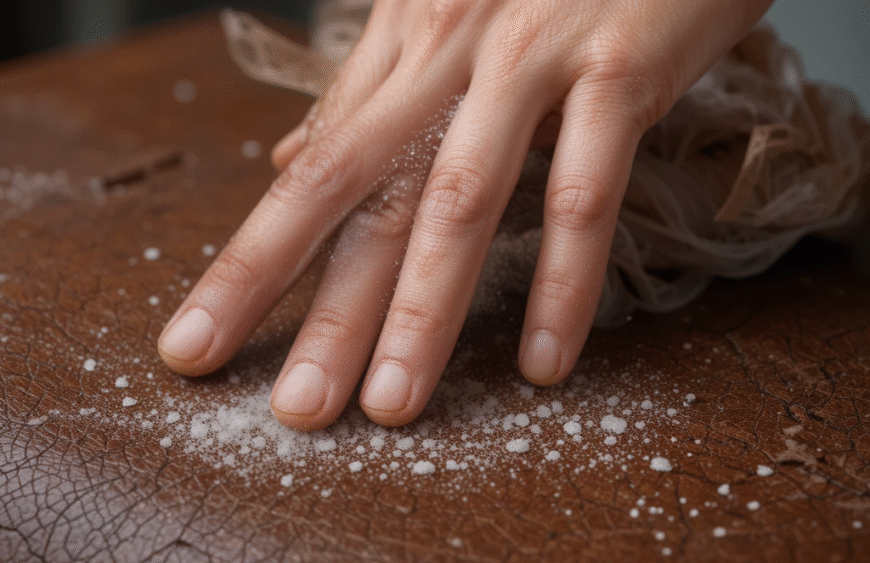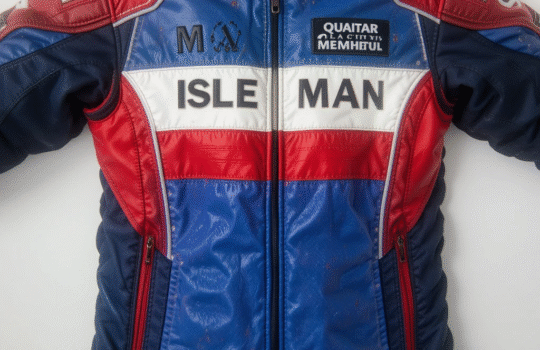How Do You Soften Stiff Leather Fast?
Introduction
We’ve all been there—buying a beautiful leather jacket, a new pair of boots, or even a vintage leather bag, only to find it’s as stiff as cardboard. Frustrating, right? Stiff leather can ruin your style, comfort, and even the usefulness of the item. But the good news? You don’t have to wait months for it to break in. There are smart, safe, and fast ways to soften stiff leather and bring it back to life.
In this guide, we’ll walk you through practical, tried-and-true methods to make your leather supple, comfortable, and looking great again. Think of it like giving your leather a relaxing spa day. So let’s dive in!

1. Why Leather Gets Stiff in the First Place
Leather is skin, after all—just not yours. And just like your own skin can get dry, cracked, and tough without moisture, leather reacts the same way. Exposure to sun, water, or even just time can cause it to lose its natural oils. That’s when it hardens up.
Imagine not using lotion for a year. Your hands would feel like sandpaper, right? Leather needs care too.
2. Is It Safe to Soften Leather Quickly?
Absolutely—if done the right way. Softening leather fast doesn’t mean damaging it. The key is to use methods that restore moisture and flexibility without overwhelming the material.
What you don’t want? Rushing the process with harsh chemicals or extreme heat. That’s like microwaving a steak to make it tender—sure, it cooks, but at what cost?
3. Quick-Acting Products That Work Wonders
If you’re in a hurry, there are several store-bought leather softeners that work fast. These include:
- Leather Honey: A fan favorite for deep conditioning.
- Bick 4 Leather Conditioner: Gentle, effective, and no darkening.
- Lexol Leather Conditioner: Great for car seats, furniture, and more.
Just rub it in using a soft cloth, let it sit, and buff off the excess. You’ll see a noticeable difference within hours.
4. Natural Oils: A Homemade Secret
Don’t want to buy anything fancy? Your kitchen might already have the answer. Natural oils are a budget-friendly way to soften leather. Some top choices include:
- Coconut oil
- Olive oil
- Mink oil
Apply a small amount to a clean cloth and gently rub it in. A little goes a long way—too much oil can darken the leather or make it greasy.
Think of it like oiling a baseball glove—slow, steady, and even coverage brings the best results.
5. Conditioners and Creams You Can Trust
Leather conditioners are like moisturizers for your skin. They don’t just soften; they nourish the leather from within. Choose a non-petroleum-based product for the best results.
Look for ingredients like lanolin or beeswax, which help lock in moisture without clogging the material. Reapply every few weeks for long-lasting softness.
6. The Heat Trick (When Done Right!)
Heat can open up the leather’s pores, making it more absorbent to conditioners. But be careful—too much heat can dry it out even more.
Here’s a safe method:
- Use a hair dryer on low or medium heat
- Hold it 6–8 inches from the leather
- Warm the surface slightly, then apply your conditioner or oil
It’s like warming your skin before applying lotion—it helps everything absorb better.
7. Using Alcohol and Vaseline Safely
Believe it or not, rubbing alcohol mixed with Vaseline is a hack that actually works—but only if done correctly.
How to use:
- Dampen a cotton ball with rubbing alcohol
- Rub lightly over the stiff areas
- Let it dry slightly, then apply a small amount of Vaseline
- Buff gently with a soft cloth
The alcohol opens the leather’s pores, and the Vaseline adds moisture. But don’t overdo it—it’s a trick best saved for tough spots.
8. Break It In—The Old-Fashioned Way
Sometimes, the best way to soften leather is by using it.
- Wear your boots
- Carry that stiff bag
- Move around in your jacket
Leather conforms to your body and movements over time. If you can combine regular use with conditioning, you’ll see faster, better results.
Think of it like breaking in a new pair of jeans—the more you wear them, the better they feel.
9. How to Soften Leather Shoes and Boots
New leather boots can feel like medieval torture devices. Here’s how to fix that:
- Apply a leather conditioner or oil
- Use a shoe stretcher to loosen the fit
- Wear thick socks and walk around your house
Doing this for a few hours a day will soften the leather and mold it to your feet.
10. Fixing a Stiff Leather Jacket
Got a vintage jacket that feels more like armor than outerwear? Here’s what to do:
- Lay it flat and apply conditioner with a sponge
- Use heat gently with a hair dryer
- Twist and move the arms to break in stiff areas
- Let it rest overnight
Repeat this once a week until the jacket feels like second skin.
11. Softening Leather Bags and Belts
Stiff bags can be annoying to open and close, while hard belts are uncomfortable. Here’s how to handle them:
- For bags, fill them with towels to maintain shape, then apply conditioner
- For belts, roll them gently back and forth to loosen fibers, then condition both sides
Soft leather not only feels better—it looks classier and lasts longer.
12. Mistakes to Avoid While Softening Leather
Let’s keep your leather safe by avoiding these common errors:
- Using too much oil: Can make leather sticky or dark
- Soaking leather in water: Can cause permanent damage
- Using direct flame or high heat: Risk of cracking
- Skipping a test patch: Always test any product on a hidden area first
13. How Long Does It Take to See Results?
It depends on the method and the condition of your leather. With a quality conditioner and light heat, you might notice a difference in just a few hours. Heavier leather may take a few days to fully soften.
Patience and consistency are key.
14. How to Keep Leather Soft for the Long Run
So you’ve softened your leather—now what?
- Store it properly: Avoid direct sunlight and humidity
- Condition regularly: Every 2–3 months
- Clean before conditioning: Dirt can block absorption
Treat your leather like your skin—it needs ongoing care to stay healthy and happy.
15. When to Seek Professional Help
If your leather item is extremely stiff, cracked, or valuable, it’s best to consult a professional leatherworker. They have the right tools and expertise to restore even the toughest pieces without damage.
Especially for antique leather or high-end designer items, a pro can save you from costly mistakes.
Conclusion
Softening stiff leather doesn’t have to be a slow, painful process. With the right tools, a little patience, and a touch of TLC, your leather can feel supple, smooth, and comfortable in no time. Whether you’re rescuing old boots or breaking in a new jacket, these simple methods will have your leather looking and feeling its best.
FAQs
1. Can I use olive oil to soften leather?
Yes, olive oil can work well in small amounts. Be sure to test on a small area first, as it may darken certain leathers.
2. How often should I condition leather items?
Generally, every 2–3 months is ideal, or more often if the leather is exposed to harsh conditions.
3. Is it okay to use a hair dryer to soften leather?
Yes, but only on low or medium heat and from a safe distance to avoid overheating or cracking the leather.
4. What’s the fastest method to soften stiff leather?
Using a heat treatment with a leather conditioner usually gives the quickest results within hours.
5. Will Vaseline ruin my leather?
Not necessarily. Used sparingly and correctly, Vaseline can soften leather. Avoid overuse as it can create a greasy buildup.
Read more: How to Clean Leather Jacket Properly | Best Leather Care Tips





